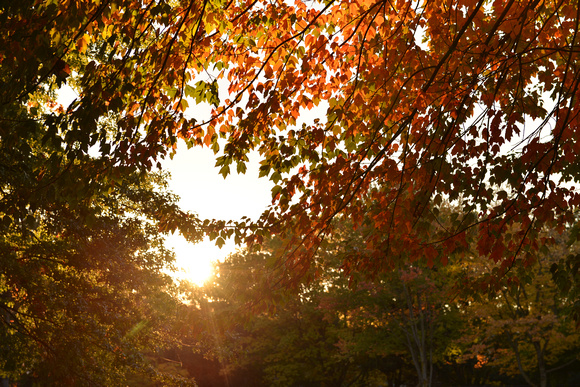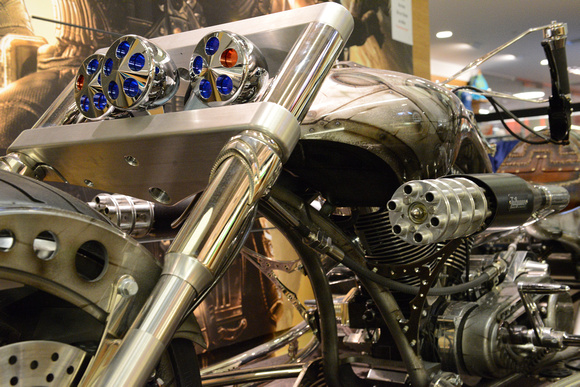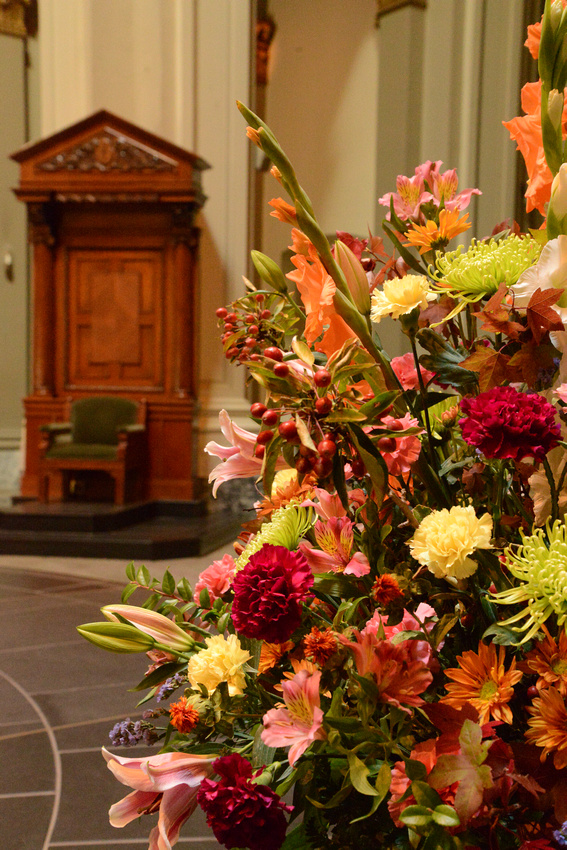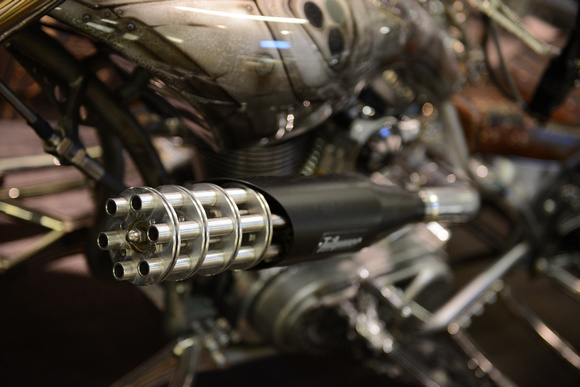
The Impressive Dynamic Range of the D600
f/5.6 @ 70 mm, 1/200, ISO 100, Shade WB
In the first part of this review entitled REVIEW: Nikon D600–My Favorite Nikon Ever?!!! (Part 1 of 2), I explained how impressed I was with this camera. After spending a couple weeks with it I simply love it. If I had the spare cash I’d pick one up, but it’s not compelling enough to make me want to switch camps.
Dispelling some rumors
When a new camera comes out there’s always the party poopers who have to whine about something. With this camera one of the major freak outs is that there is no AF On button on the rear of the camera. Well I wanted to point out that you can easily solve this problem by simply reprogramming the preview of Fn button on the front of the camera to act as a AF On button (that I might add is easier to use in that location anyway).
Another whine is that it can “only” do 3 bracketed exposures, but if you watch HDR guru Trey Ratcliff’s HDR Photo Course you’ll notice that he almost always only uses three exposures anyway. If you shoot in RAW you can pretty much have everything you need with 3, so despite my having cameras that can do more than 3 I always limit my bracketed shots to 3 as I’ve seen little value in more than 3 in all but very extreme cases.
The last gripe that seems to be real common right now is that this camera is a small body that is not well built, but I’d challenge that as well. Thanks to a nice grip with a rear raised thumb grip (shown above) this camera is easy to hold even for guys with big hands like me. Naturally a MB-D14 battery grip would make it even better, but I wouldn’t say this is a camera that requires the grip for it to be usable. I also think this camera body feels like a solid mid-range camera body worth of acceptance by those moving up from a D700. Yes, you read that right – I do think that despite the physical smaller size, this is a big step up from the D700 in terms of image quality.
The only rumor out there that I think is totally accurate is that the range of focus points in the viewfinder sucks, but I touched on that already in my previous article. You get used to it, but yes it really does suck. It doesn’t suck enough for me to prefer the D800 though, so unless you are a commercial photographer printing gigantic prints (i.e., greater than 36”x24”) then THIS IS THE BETTER CAMERA FOR YOU.
I will say that the (Q)uiet mode added to the D600 to match the (S)ilent mode of the 5D Mark III is a joke. On the Nikon it’s just a slower mirror slap with a crunch sound that is nearly the same as the regular mode. The Canon 5D Mark III is genuinely much quieter, so that is worth considering if you are a wedding photographer looking for the product with the least audible shutter release.
D600 vs 5D Mark III - Portrait Comparison using 24-70 f/2.8 lenses
In my popular article entitled COMPARISION: Nikon D600 vs Canon 5D Mark III using the latest 24-70 f/2.8 lenses, I compared the D600 against the 5D Mark III to see how they performed against each other using Nikon’s legendary AF-S 24-70mm f/2.8G ED lens against the Canon 5D Mark III using its all new 24-70mm f/2.8L II USM (my review) lens. I had done a similar comparison with the Nikon D800 vs Canon 5D Mark III using the Canon 70-200mm f/2.8L IS II USM versus the Nikkor 70-200mm f/2.8G ED VR II using my favorite clear skin/straight hair model Juliet Dang.
I thought it would be fun to bring Juliet back into the studio to do a simple D600 vs 5D Mark III test with the 24-70mm lenses. This is your typical DMV mug shot under studio lights, but what it does is give you an idea of how each camera (and to a large extent the lens) renders detail in the hair, eyes and lips. In short, yeah it’s a boring shot but it’s somewhat helpful for reviewing cameras.
Testing Methodology
To do this shot I put both cameras on f/11 and ISO 100 and shot using the largest JPEG and uncompressed RAW format. Both cameras had their 24-70mm lens at 70mm and used auto white balance under an identical lighting setup. I took over 20 shots with a single focus point on the eye and chose the one that I felt like rendered the sharpest result on the eyelashes.
For the Canon I had to drop my shutter speed as 1/200 second caused sync speed issues which really sucks because the 5D Mark II had this same issue. For studio flashes it’s sync speed is really 1/160 instead of the advertised 1/200.
You can mouse in out and out of the the images below on your computer to see the original in-camera JPEG (mouse out) and the RAW file processed with Lightroom 4.1 with sharpening and noise reduction turned off (2012 method). The captions have links to the full size files with the in-camera JPEG being the exact in-camera JPEG that came from the camera with only a filename change and metadata update (via Lightroom). The sRGB color space was used on all of the images for displaying via web browsers using the industry standard color space (that nobody likes :p).

Nikon D600, f/11 @ 70 mm, 1/200, ISO 100
Mouse over to see Lightroom 4.1 processed RAW with no sharpening or noise reduction (full size)
Mouse out to see the in-camera JPEG with camera defaults (original)
70mm is a horrible focal length for Asian models, but Juliet was a trooper and gladly let me shoot away. Unlike the D800 review, and for a rare first time, I actually much prefer the auto white balance of the Nikon over Canon (honestly – first time I’ve ever felt that way – I hate Nikon AWB).
Canon 5D Mark III with 24-70mm f/2.8L IS II USM

Canon EOS 5D Mark III, f/11 @70 mm, 1/160, ISO 100, AWB
Mouse over to see Lightroom 4.1 processed RAW with no sharpening or noise reduction (full size)
Mouse out to see the in-camera JPEG with camera defaults (original)
Close-up Comparison Lips
Using Lightroom 4.1 as the RAW processing tool with no noise reduction or sharpening, you can see below how the lips compare against each other (using the shots above):
D600 Lips - 100% Actual Size (from RAW)
5D Mark III - 100% Actual Size (from RAW)
Overall I’d say this one is too close to call. The Canon has a tad bit more detail at the top and bottom of the lips, but both would sharpen up perfectly so I’d rule this as a draw.
Hair and Eyes Comparison
D600 - Hair and Eyes at 100% Actual Size (from RAW)
5D Mark III - Hair and Eyes at 100% Actual Size (from RAW)
This just shows what we saw from my previous comparison and that is that the new Canon lens is sharper. While the extra resolution of the D600 might give it a more shallow depth of field, I don’t think that is what we are seeing here because the veins in the eyes are clearly sharper on the Canon.
What to make of the results
Ultimately I think that Canon ended up with a sharper 24-70mm lens than Nikon, but then again it should since Nikon’s was released in 2007. It’s certainly clear from the D800 vs 5D Mark III test that the 70-200mm lenses from both Canon and Nikon blow away their 24-70mm counterparts!
What this ultimately tells me is that the resolution of the Nikon D600 is about the same as the 5D Mark III and that really the lens sharpness will be the only differentiating factor. This is a bit of a “no duh” since they are the nearly same resolution with almost identical sensor sizes, but I felt the need to make sure this was the case in practice.
What this also tells Canon shooters is that while the new Nikon D600 and D800 may be great new camera bodies, if you stick with the latest Canon lenses you’ll get sharper images. In other words, it’s not worth switching camps.
What this tells Nikon shooters is that there’s not any reason to lust after the Canon cameras as the subtle differences in sharpness are easily resolved in post-processing sharpening. In other words, it’s not worth switching camps.
High ISO Noise Performance vs 5D Mark III (Bookshelf Test)
You can see full details on my photos in my article entitled COMPARISION: Nikon D600 vs Canon 5D Mark III using the latest 24-70 f/2.8 lenses. What I present here are just a couple quick 100% crops to show the D600 high ISO noise performance. Both images were processed from their RAW original in Lightroom 4.1 with noise reduction and sharpening set to zero and they use the 2012 processing method:
D600 24-70mm f/2.8 @ 24 mm, 1/200, ISO 25,600 – 100% Crop from RAW in LR 4.1
5D Mark III 24-70mm II f/2.8 @24 mm, 1/200, ISO 25600 – 100% Crop from RAW in LR 4.1
Neither camera is pretty at its maximum ISO, but if you click the images above you’ll go to their in-camera JPEG which definitely favors the Canon quite a bit. What this tells us is that Canon does a better job with its in-camera processing of noise and detail preservation, but with the raw file and a copy of Dfine or Noiseware and standard sharpening, you can probably match the performance of the 5D Mark III. The D600 has less color noise and the Canon has more detail thanks to its sharper 24-70mm lens, and the Canon has more saturated images which I personally find more visually appealing. However, post-processing can put them on an equal footing.
Video
I hate video with a passion, so I don’t spend much time fooling with it. As a result, I’ll be brief and share two videos done with the D600 that give an idea of what to expect from the video. These are 1080p videos done at 24fps vs the maximum of 30fps simply because I prefer 24fps when I do bother to do video. Given the sunny day and the fact that shutter speed should be no more than 2x fps, the aperture needed for these videos was f/11 on the water shot and f/8 on the outdoor shot – both at ISO 100. I think this is a place where having a super sharp lens makes a huge difference, so I was a little disappointed with the performance (especially after some of the P&S cameras I’ve tested). I did use the Shade white balance and I was on a monopod, but handheld so there’s still the typical motion shake you’ll get unless you have proper HD video gear (like stabilizers). The focus is also kinda blah and you’ll hear in the video when I press the shutter button to reacquire focus.
To keep the pitchforks from coming out I did one 1080p 30fps video indoors under tungsten light with a custom white balance of 4350K at ISO 320 with an aperture of f/2.8 and pre-focused on the coffee pot. The internal camera microphone was set to the Auto setting, and I used a shutter speed of 1/60 sec (2x the fps). The custom white balance setting was chosen to match what the Live View preview showed versus what the actual room lighting looked like – they appeared to be identical at the capture time (and on playback), but on YouTube it still seems overly orange.
Overall I wasn’t blown away, but it doesn’t suck either. In much more capable hands with proper HD video gear I’d imagine it would create nice results. Personally I wouldn’t use this lens for video though.
Sample Images

D600, f/8 @ 48 mm, 1/50, ISO 8063 (huh? yep, that’s what the camera reports – ISO 8063!)
Most impressively, that odd ISO is pretty darn clean and usable if you ask me!
Visit the samples gallery to get more samples not featured in this article. Here’s one repeated for fun just because it shows off this camera at ISO 12,800:

f/8 @ 52 mm, 1/30, Hi-1 (ISO 12,800), WB 5560K (Kit Lens)
Click for unmodified original in-camera jpeg
Conclusion

The D600 kicks ass and takes names
If you own any older Nikon body released before this year and you are looking for an upgrade, this is the camera to buy. Seriously, it’s that good. In fact, I’m a Canon shooter and I want one!
If you are debating back and forth between the D800 and D600, I strongly believe the D600 is the way to go. Unless you are a commercial photographer printing gigantic prints (i.e., greater than 36”x24”) then THIS IS THE BETTER CAMERA FOR YOU.
The dynamic range on this camera is excellent, and the in-camera noise performance at RAW and JPEG is way better to my eyes than the D800. Even at ISO 25,600 it’s totally usable, so there’s very little not to like about this camera. I also feel like it is a brilliant value when you consider that the 5D Mark III ($3559 USD) is $1462.05 USD more expensive than the D600 ($2096.95 USD). That’s enough money to put a good down payment on a Nikkor 70-200mm f/2.8G ED VR II, or nearly buy the AF-S 24-70mm f/2.8G ED.
As a Canon shooter, I was pretty unimpressed with the video but I also am not a video shooter (and in fact quite hate video) so some may disagree with my disapproval with the video performance.
I find the Canon’s Quick menu, auto focus system, auto white balance, video performance, focus point range, and in-camera HDR support to be significantly better than the D600. I also think that overall the 5D Mark III makes the better camera for event and especially wedding photographers. However, Nikon has made the right tradeoffs for the better price point, so I’m sure this is going to be a hot selling camera.
At the end of the day if B&H told me that I could have any Nikon camera in the store I’d probably look for the D3s, but if they didn’t have any an easy next choice would be the D600. I prefer its image quality over the D4 that I tested and I prefer its everyday usability over the D800. Simply put, it’s the best current generation Nikon on the market and one I’d be proud to own. In fact, if I had the spare cash I’d buy one myself!
Where to Buy
I highly recommend that you buy from B&H to show appreciate for them loaning me this camera so I could bring this review to you. I also recommend Adorama and Amazon.
Other articles you might enjoy
- REVIEW: Nikon D600–My Favorite Nikon Ever?!!! (Part 1 of 2)
- COMPARISON: Nikon D600 vs Canon 5D Mark III using the latest 24-70 f/2.8 lenses
- COMPARISON: Canon 6D vs 5D Mark III and Nikon D600
- Nikon D800
- Nikon D4
- Nikon D7000 & 24-120mm Lens
- Canon 5D Mark III First Look & “For Parents Version”
- COMPARISON: Nikon D800 vs Canon 5D Mark III
- First Look: Nikon D800–Should Canon 5D-Mark III Users Switch?
- FAIL: Nikon D800 Live View vs Canon 5D Mark III
Disclosure
B&H provided a loaner camera and lens for this review. If you make a purchase using links found in this article, I may make a commission. Thanks for showing your appreciation by using my links when placing your order.








3 comments:
Hi Ron,
Thanks for the great review. I am actually strongly considering the D600. I am currently a Canon shooter, with 24-70 and 70-200 F4 IS as my lens investments. The current deals on D600 actually make it cheaper for me to move to D600 than to upgrade to 5d mark3. The only concern at this point is the issue of auto focus points that could become an issue for sports/action. What do you think?
Sorry for the delayed response, but I've been on vacation.
You might want to also check out my review of the 6D.
Neither the 6D or D600 is a great sports camera, so if that's important then your options are the 7D (whose sensor I hate) or the 5D Mark III. If you want to switch to Nikon then it's the D700 or D4.
my self josin
basically iam a wedding album designer i have a plan to start photography. can you suggest a camara for me, nikon d600 is it a good camara for wedding photography
i like nikon (d600 and d800)
D600 .24-70mmf/2.8 , 50mmf1/8g
D800 .24-85mmf/2.8-4D if
Post a Comment